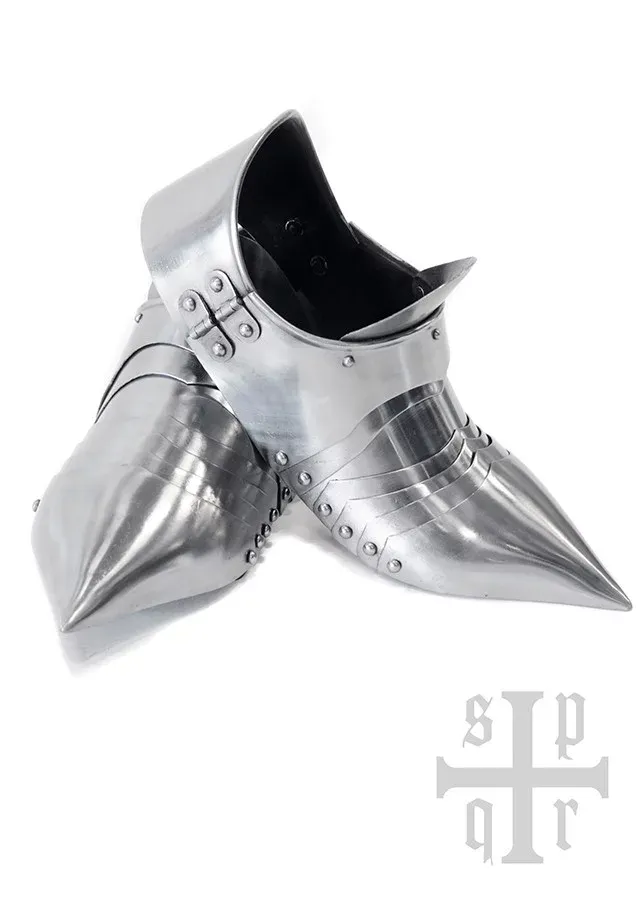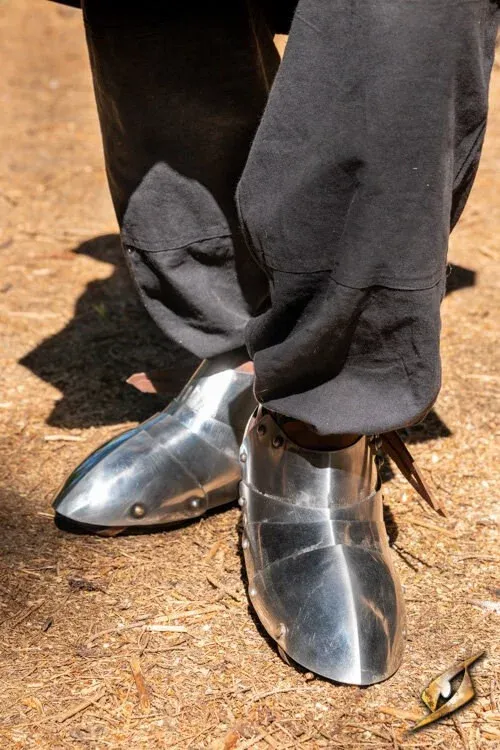What are Escarpes?
The greaves, known in the Middle Ages as "escarpines" or medieval "sabatons," represent one of the most interesting innovations in armor design of that time. Their main purpose was to protect the warriors' feet without compromising mobility. Below, we will explore in detail their composition, types, and evolution throughout medieval history.
Composition and Function of the Greaves
The greaves were essentially like "armored shoes," made up of articulated plates that covered the heavy footwear typically worn by the man-at-arms. Although they did not have their own soles, the greaves were worn over normal boots, providing an extra layer of protection that extended from the throat of the foot to the toes.
Articulated Plates
- The articulated plates allowed for flexible and natural movement of the foot. This articulation was crucial for freedom of movement, especially during combat.
Types of Greaves
There are several types of greaves, each adapted to different circumstances and needs:
- Extended Blade Greave: Used from the 14th to well into the 15th century, it consisted of 4 to 6 plates and ended in a sharp point, reflecting the styles of footwear of the time.
- Bear Paw Greave: Designed for foot combat, it featured a wide base for greater stability and was secured with a strap. It offered great mobility through its six plates.
- Duckbill Greave: Emerged in the 16th century, it was suitable for both horse riding and foot combat. With nine plates and a square toe, it adhered to the fashion of footwear of the moment.

Evolution and Use of the Greaves
The greaves began to be used in the early Middle Ages, when chainmail was reinforced with additional plates to improve defense. Historical documents, such as the seals of Alfonso VIII of Castile, demonstrate their widespread use from then on.
Improvements in Protection
Over time, the materials and designs of the greaves evolved. With the introduction of materials such as galvanized steel, these items became not only more resistant but also more comfortable. Some models even integrated spurs, facilitating both riding and foot combat.

Complementary Uses
In addition to their defensive function, some greaves were designed with sharp points to inflict damage on enemy horses during combat, demonstrating their utility in both offensive and defensive scenarios.
Innovations and Design
The greaves exemplify the complex relationship between function and fashion in medieval armor. They not only represented essential defense but, with their elaborate designs and embellishments, reflected the hierarchy and social status of the wearer. This balance between functionality and style is a key characteristic of medieval weaponry.
| Type of Greave | Period | Characteristics | Main Use |
|---|---|---|---|
| Extended Blade Greave | 14th-15th Century | Sharp point, 4-6 plates | General |
| Bear Paw Greave | Middle Ages | Wide base, 6 plates | Foot Combat |
| Duckbill Greave | 16th Century | Square toe, 9 plates | Riding and Foot Combat |
These elements continued to evolve throughout the Middle Ages, showcasing the ingenuity and adaptability of armor designers who sought to balance maximum protection with the practical needs of medieval combat.
















